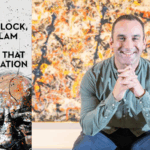A little while ago, as I was riding my motorbike on the way to the Theological College in Adelaide, I saw something that left me cold. There was a young man, dressed in a hoodie, with his hands in his pockets. He saw someone on the median strip, took his right hand out of his jeans pocket, formed a gun and “fired” it. He had taken aim at a young Muslim woman wearing a head scarf and he had “shot” her.
This happened only about two hours after reading that Japan’s Conservative Party leader, Naoki Hyakuta, had made comments in an interview suggesting that women should be limited in their access to higher education from age 15, banned from marriage from age 25 and be forced to have hysterectomies once they reach age 30. It was in the context of the concern for the changes in Japanese society moving into a more service oriented space where women had increased employment possibilities, and the “need” for Japanese women to have more children when they are young, to address this structural issue. The female interviewer shut him down very quickly after the final remark, saying it was too extreme, even for the science fiction scenario the lawmaker was proposing. He quickly received backlash online and promptly withdrew his comments.
But this followed a concerning read that a school friend had posted on Facebook the previous night. It seems that since Trump’s election, on the 5-6th November, there was a 4,600 percent increase in the phrase “your body, my choice” being used by men on social media, directed at women, as tracked by the US based Institute for Strategic Dialogue. The phrase was being used as a way of telling women that they had no rights over their own bodies, and that this actually belonged to men. The “manosphere”, a popular area of social media (especially for disenfranchised young men) focused on men’s concerns, also saw an increase in men calling for the repeal of the 19th amendment, which gave women the right to vote in the United States, and in demands for women to get back in the kitchen.
Recently, I received a petition from Avaaz concerning a law in Iraq, that is soon to be voted on, which would allow religious courts to decide family matters, which could result in girls as young as nine years old being forced to marry, potentially legalising child rape. The Guardian reported on the same issue when the law was first proposed several months ago. There are fears that former gains made by women were seen as a threat by male leaders of the Coordination Framework, a political group of Iranian-aligned factions that have passed Sharia-oriented laws, and are beginning to restrict and suppress woman as a result.
These four incidents are on the back of several weeks of reading that the fertility rates in several countries around the world were dropping to record lows and there were various narratives demanding that women have more children.
Greenland had one of the highest birthrates in the world in the 1960’s, with many native Inuit women having seven or more children. But this dropped dramatically in the late 1960’s and early 1970’s, due to a covert Danish government policy to keep the population under control to cut welfare costs as Greenland became a county of Denmark rather than just a colony. Thousands of Inuit girls and women, potentially more than half the child bearing population, were forced to have IUD’s (a contraceptive coil) inserted, without their or their parent’s consent. These were often too large for adolescent girls and resulted in unbearable pain, mental anguish, and, for some, permanent infertility. Well over a hundred women are now suing the Danish government for human rights violations. The fertility rate is now around 1.84 births per woman, below the replacement rate of 2.1.
China had the largest population on the planet in the 1970’s and in 1978 brought in the “One Child Policy” to try and curb the dramatic rise they were experiencing amidst global fears of overpopulation. Nanfu Wang’s documentary One Child Nation reports how the enforced policy resulted in women being sterilised after their first child or forced to have an abortion for second or subsequent pregnancies. As boys are still seen as more valuable, girls were aborted, despite medical gender reveals being illegal. Other punishments for women included their houses being demolished, huge fines imposed, and major career restrictions if they were found to have a second child. The result was a very disproportionate population and a dramatically lowered fertility rate. The law was abandoned in 2015 for a two child policy and in May 2021 a three child policy was introduced.
China’s fertility rate is currently 1.707 births per woman. The result is that Chinese women are now being harassed in the totally opposite way, with women reporting calls from government officials asking about family planning, if they are currently pregnant, and even when their last menstrual cycle was.
In England and Wales, the fertility rate has dropped to the lowest that it has been since records started in 1938. Sitting at 1.44, it is lower than the European average of 1.5 births per woman, despite having the highest population of women of child bearing age ever. The barriers to women having children include timely and positive access to gynaecological care, lack of gender equality in the workplace and the home, government policies that are not family friendly, and struggles to find appropriate and supportive partners/fathers.
Australia is following world trends. This year the fertility rate hit 1.5, the lowest it has ever been. This is pitched as a concern because it can result in detrimental economic effects, which leads to people being fearful of their financial security, and this in turn leads to choices to not risk having children. It becomes an inescapable spiral. The major concerns preventing women from having children are housing affordability and cost of living, economic and job security, higher education rates for women that result in delaying having children, gender equality and the pay gap, the high costs involved in having and raising a child, poor childcare and parental leave options, diminished opportunities for future children, overpopulation, and climate change.
In 2004, former treasurer Peter Costello’s “baby bonus” catchcry was to have “one for mum, one for dad, and one for the country”. In 2020, former Prime Minister Tony Abbott called for middle class women to have more children. He said that women on welfare have plenty of children, while wealthy women could afford as many as they wanted. (A satirical exploration of his fears is played out in the 2006 movie Idiocracy.)
Even in parts of the Christian world there is criticism aimed at single people but especially at childless women. Danielle Treweek’s Australian Christian Book of the Year for 2024, The Meaning of Singleness, reports a growing trend among evangelical and fundamental churches and authors claiming that celibate singleness is the greatest threat to Christianity. Singleness threatens the family unit which is seen as the most important expression of Christian existence. They claim that the best way to know Jesus, who remained single throughout his 33 years, is, ironically, to get married and have children.
It seems that there are still political, social, economic, and even religious demands crying out for the control of women’s decisions, bodies, child bearing, and even freedom.
The Church is the Community of God
In this Advent season, as we move toward the celebration of the birth of Jesus, God incarnate, how do we respond to this? How would a pregnant teenage girl, a confused but obedient husband, and a newborn baby speak into this current conversation?
Jesus’ birth, and his subsequent life, ministry, death and resurrection, heralded the salvation of humanity and the renewal of creation. His birth also heralded a new way of being family.
The church became the true family of God. It no longer relied on natural childbirth to swell its ranks as the Jewish nation had. In fact, it existed to draw all people to know and follow Christ, with inviting words and humble, brave, and Christlike actions. While still flawed, and always in need of God’s grace, the church is called to be a dynamic, creative, and welcoming example of changed lives and loving acceptance.
Treweek writes:
“…Christian adulation of the nuclear family is both theologically misplaced and pastorally hazardous. Though the biological family remains a genuine good to be pursued, enjoyed, and honored, it is not intended to bear the ultimate weight of the Christian’s existential hunger for intrahuman intimacy and belonging. Such a privilege – and responsibility – belongs to the church, the eschatologically redeemed body of Christ who lives in actual and also anticipatory relationship with him.”
The holy family welcomed the poor and outcast in the shepherds, the rich and educated in the Magi, and, quite likely, the average person in the innkeeper, at the birth and early childhood of the Christ child.
Theologian Stanley Hauerwas argues that the family is not the basic unit of the church, or even society, but rather the Church is the community of God moving toward the eschaton. As such, all members should become spiritual parents to those younger Christian “children”, those new to the faith, no matter their age.

All are welcome in the family of God and a falling birth rate or pressuring women to bear children should never scare the church or be something the church participates in. It should not distract us from our true calling – to love God and others, to act justly, love mercy, walk humbly with God, and do good to all, sharing the amazing news that God is with us. That little baby was and is the light of the world, the Son of God, and we are co-heirs with him of a coming kingdom far greater than any human government, political system, nation state, or earthly family we can ever dream of.











